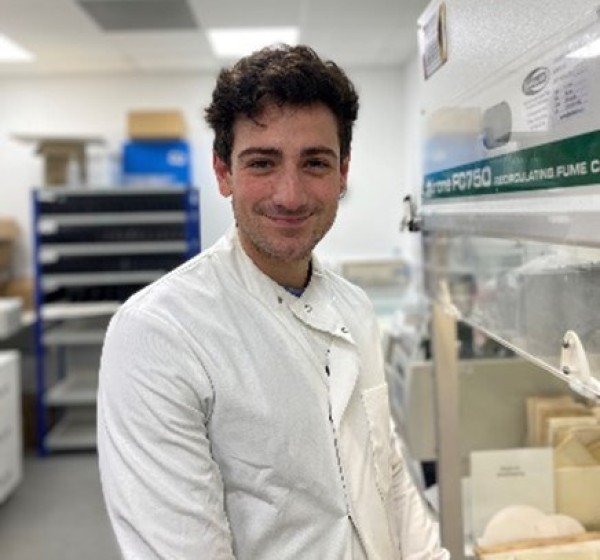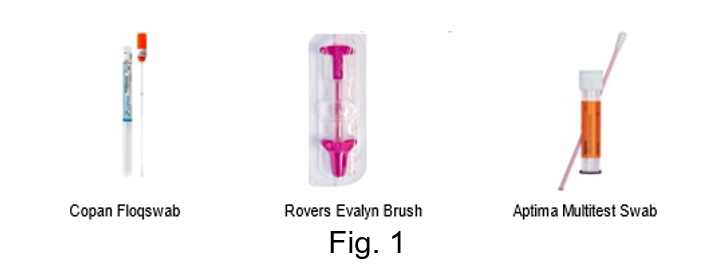HPValidate self-sampling study. Our experience in Bristol Cervical Screening Lab
by Mauricio Binotti, Medical Lab Assistant
Mauricio Binotti, Medical Lab Assistant - Bristol Cervical Screening Lab UK
Acknowledgements
I would like to thank Dan Clarke, Kath Hunt, and Helen Burrell for their help in putting together this blog.

Having a cervical screening test is the best way to prevent cervical cancer in the UK and making sure that the sample is correctly collected by a clinician has always been required to obtain a sample for testing. However, this is known to be unacceptable to some patients resulting in non-attendance, so a new study from the NHS is being evaluated to look at use of self-testing where the patients take their own cervical screening sample.
There are many reasons why people do not attend for cervical
screening, research has shown that embarrassment, pain, and lack of understanding
are often the main ones. The process can cause worry and apprehension. Other
reasons include cultural barriers, previous sexual assault, and fear, to name
just a few. The population in the UK is diverse, and cervical screening should
be inclusive of all eligible people, and access should be made to all, it is
time to develop and increase the strategies around it. Studies have shown that
self-testing can increase the compliance and follow up for treatment of
patients who normally do not attend.
Self-taken samples are not suitable for cytology screening, however the move to HPV primary screening has allowed the possibility of self-taken samples to be tested for the virus.
Bristol Cervical Screening Laboratory is one of 8 labs in England,
we process cervical samples for eligible people living in the South-West of the
country. We were keen to be part of this latest pilot, and we were fortunate to
be chosen to be part of this in May 2021.We have always been keen to be part of
any studies looking at new technologies that could help the cervical screening
programme, these have included the move to liquid-based cytology, HPV triage
and test of Cure, HPV primary screening. It’s great for staff morale to be part
of new projects.

Three self-sampling devices (Fig 1) are being validated with the HPV platforms in use within the screening programme.
The self-taken samples are being processed in four laboratories in England. Our lab, based at Southmead Hospital in Bristol is one of the labs involved. The main purpose of self-sampling is to reach patients who are non-attenders for cervical screening, as they are a high-risk group for developing cervical cancer. For validation of the method, various self-testing products are compared against an equivalent sample taken by a clinician on the same day.
Recruitment into the study
In the South-West, five GP practices were selected to supply patient’s samples, this cohort of people who will be on routine recall will be used to test the specificity of the test. The patient attends the appointment and is given instructions on how to take the self-test. Once the self -sample has been obtained by the patient, the clinician then takes a cervical sample in the usual way, fills out all the paperwork and sends both samples labelled with study ID number to the laboratory. There is also a questionnaire for the patients, to collect some data for improvement of the study. Another cohort of patients are those attending colposcopy with either persisting HPV positivity with either negative or abnormal cytology. This cohort will be used to test the sensitivity of HPV testing on the self-sample. In Bristol we have been processing self-samples collected using the Evalyn sampler, and we use the Hologic Panther HPV testing platform.
What happens when the samples arrive in the lab?
Both the LBC pot (clinician taken) and the Evalyn Brush (Self taken) should arrive from the GPs (primary care) together along with a completed request form (for both LBC and Self-test Brush) and a signed consent form. Prior consent must have been given on the accompanying form for each stage to be performed. For colposcopy samples there will only be the self-taken sample, as these patients have already had a recent clinician sample taken.
Processing Self Sample Brush (Evalyn)
The brush head containing the sample is transferred to a tube containing PreservCyt and labelled with the sample number. This is performed in a C3 cabinet that has been decontaminated by UV light. The tube is vortexed and 1ml is pipetted into an Aptima tube which is then heated for 75 minutes at 90 degrees C and left to cool down. The tube can then be loaded onto the Panther to get a positive negative or invalid result The brush heads in PreservCyt tubes are then stored in the fridge before transportation to archive along with their LBC pot counterparts.
Results
HPV results are then added to the relevant spreadsheet for each study. Results will include those for the self-taken test, the GP taken samples, and for colposcopy patients, and information regarding referral data and subsequent colposcopy and histology results. This information is shared with HPValidate team, who meet regularly to assess progress with the pilot study. The study aims to validate the self-sample device/test combination for sensitivity and specificity. It also will allow insight into the logistics of processing self-testing and associated costs as well as assessing the acceptability to the user of the self-testing method and creating a database to be used in future technology development and evaluation. People who are HPV positive would need a clinician taken sample to allow for any subsequent cytology screening.
Recruitment to the self-sampling study continues. Once sufficient results have been collected, we look forward to knowing the outcomes and to see whether self-sampling may one day be rolled out as part of the National Cervical Screening Programme.
